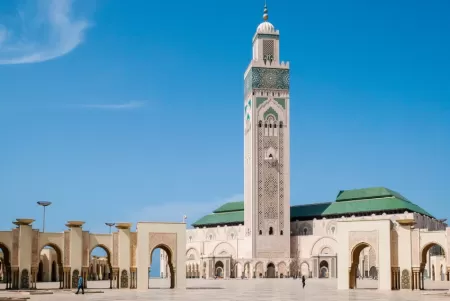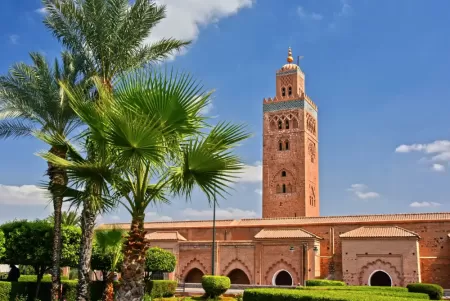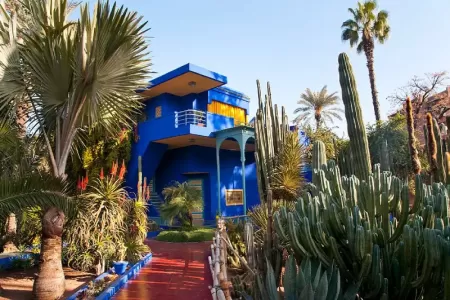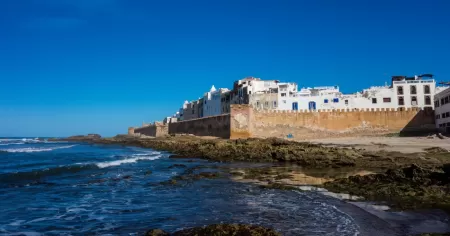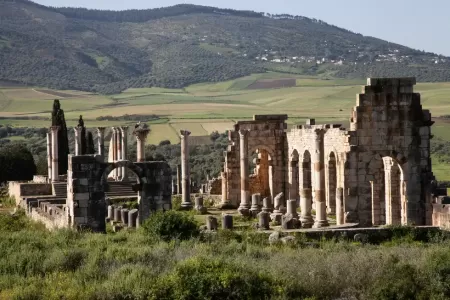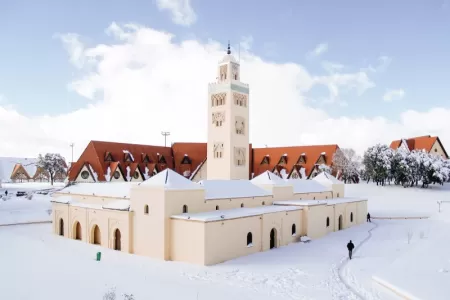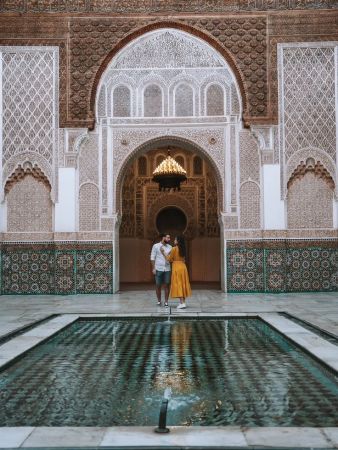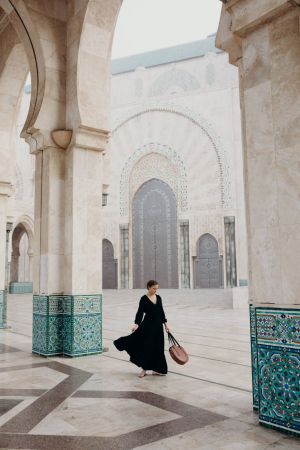The Koutoubia Mosque is Marrakesh’s most famous landmark, known for its stunning 12th-century minaret, beautiful gardens, and rich historical and architectural significance.
Hassan Tower is a striking 12th-century red sandstone minaret in Rabat, Morocco, originally intended to be part of the largest mosque in the world. Though unfinished, the 44-meter tower and its surrounding ruins showcase the grandeur of Almohad architecture and remain an iconic historical and cultural landmark in Morocco’s capital.
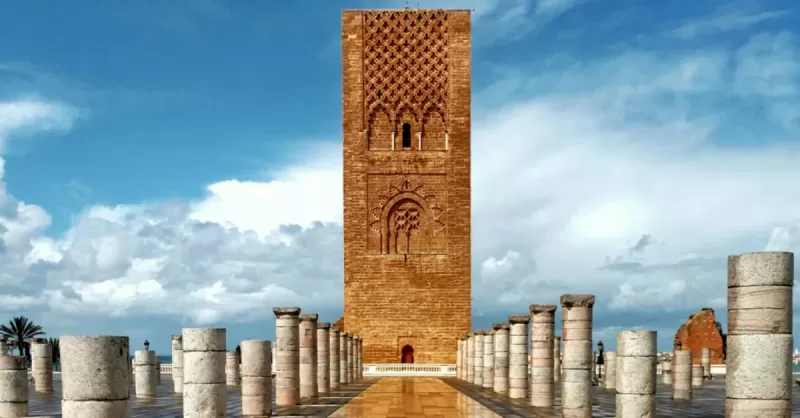
In the heart of the Moroccan capital, Rabat, stands the majestic Hassan Tower—an aloof yet autistic symbol of the country's ageless Islamic history and imperial ambitions. It was meant to be the largest mosque ever built, but instead, for the greater part of a millennium, this unfinished minaret has come to signify grandeur, legacy, and architectural brilliance. Whether your interest lies in history, architecture, or adventure, the Hassan Tower should be a very famous realization for every Morocco travel guide; it is more than just a monument. It is the relic of a golden era waiting to be explored.
The Legacy Behind Hassan Tower
Hassan Tower was undertaken by Sultan Abu Yusuf Yaqub al-Mansur, the ruler of the Almohad dynasty since 1195. He dreamed of creating the largest mosque in the world, a monument to display the power and splendor of his expansive empire that stretched across North Africa to Spain.
The construction ceased with the death of the sultan in 1199, and the mosque was never finished. All that remains is a minaret 44 meters (144 feet) high, with the intention of reaching twice this height, and scattered ruins of columns that were to support the mosque.
Despite being incomplete, Hassan Tower still stands as one of the greatest historical sites in Morocco to show off the richly endowed architectural heritage of the country.
What Makes Hassan Tower Unique?
The Minaret— Made of beautiful red sandstone, Hassan Tower exhibits intricate patterns of geometric carvings and arches depicting the purest examples of Islamic art.
The Ruins—Huge rows of stone columns scattered all over the wide courtyard, glancing at the sheer scale of one of the world's major mosques.
No Stairs—An unusual design of the tower, perhaps, where the muezzin was able to go to the top on horseback using ramps rather than stairs.
Emulation of Other Landmarks—The architecture of Hassan Tower would later inspire structures such as Giralda in Seville, Spain, and the Koutoubia Mosque in Marrakesh.
The contrast between the great vision and the unfinished actuality makes Hassan Tower a site that can never bore you.
Mausoleum of Mohammed V
Just adjacent to the Hassan Tower is another very famous site—the Mausoleum of Mohammed V, Burial Place of King Mohammed V and his two sons, King Hassan II and Prince Abdallah. Built in 1971, the mausoleum is a fine example of Moroccan art, bearing features such as
- White marble with a traditional green tiled roof symbolizing Islam.
- Magnificently decorated interiors with zellige tiles, calligraphy, and chandeliers.
- Royal guards in traditional attire reinforcing the feeling of grandeur.
Together, Hassan Tower and the Mausoleum of Mohammed V are perhaps the most culturally significant and visually beautiful sites in Rabat.
Why Should You Visit Hassan Tower?
A Walk Through History—Standing before the Hassan Tower, you will remain imbued with a vision conceived centuries ago and still instilled in Moroccan architecture today.
Unmatchable Views—Being one of the highest points, Hassan Tower offers breathtaking panoramic views of Rabat, the Bouregreg River, and the Atlantic Ocean.
A Photo Wonderland—The site comprises winding stone columns, intricately carved monuments, and mausoleums with unlimited photo opportunities.
An Oasis of Calm— Away from the hustle and bustle of other Moroccan city streets, Hassan Tower offers a calm and reflective experience for its visitors.
How to Visit Hassan Tower?
Location: It sits at the heart of Rabat and alongside the Bouregreg River, not far away from the Kasbah of the Udayas.
Opening Time: Open daily from morning to evening except for some variations during Ramadan and official religious holidays.
Entrance Fee: Free! It costs nothing to visit Hassan Tower and the Mausoleum of Mohammed V.
Getting There:
By Taxi: The easiest and most convenient way to reach Hassan Tower from wherever you are in Rabat is to take a taxi.
By Tram: Board the Rabat-Salé Tram and get off at Place Al Joulane; from here, it is a short walk to the site.
Travel Tips for a Memorable Visit
Make It a Sunset Visit—Sunset is the best time for photography, with warm light literally bathing the building and making the red sandstone glow.
Respect the Site—While the site is open to visitors, it remains a place of cultural and spiritual importance.
Dress Hut-Worthy— Even though there is no hard-and-fast rule on dressing, appropriate dressing is always appreciated in Morocco, especially when visiting historical and religious sites.
Explore Around—After Hassan Tower, the well-manicured Kasbah of the Udayas awaits with its sweeping ocean views.
Is Hassan Tower Worth Visiting?
Absolutely! Hassan Tower is not just a mere monument; it is a symbol of Morocco's history, an Islamic architectural masterpiece, and a serene abode for reflection. Wherever you go on Morocco tours, this has to be on your list, whether you are spending a day in Rabat or the entire week.
So, if you have landed in Rabat, do not simply rush past it; grab a moment and admire the history, architecture, and beauty of Hassan Tower.

